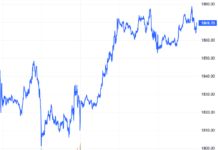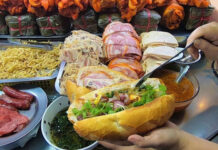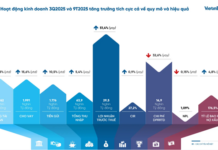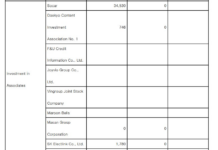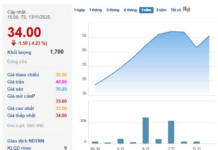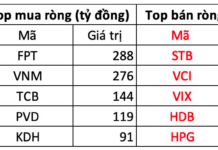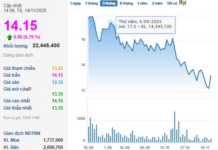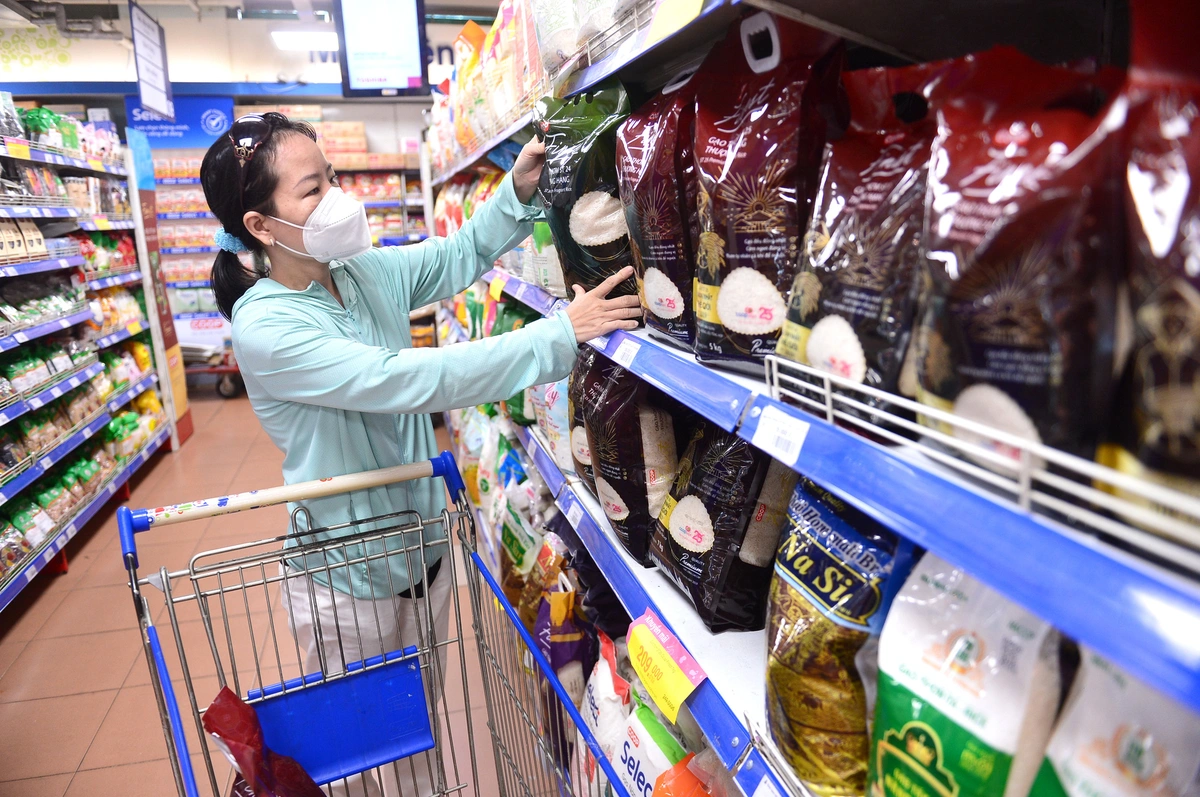
|
Rice products on display at a supermarket in Ho Chi Minh City – Photo: QD
|
In early July 2025, the news of a prominent rice brand being banned from bidding due to quality issues caused a stir in the market, especially among consumers who have long believed that supermarket products meet the “standard.” This incident brought to the surface a lingering question: “Why do many people still believe that rice from supermarkets is not as tasty as rice bought from traditional markets or shops?”
Ms. Bich, a resident of An Dong Ward in Ho Chi Minh City, used to be a loyal customer of ST25 rice sold in supermarkets but has now switched to buying rice from a local shop because, in her words, “the rice has a genuine aroma.” This change in preference is not necessarily about price but rather a sensory perception—something that cannot be verified by labels or certificates.
From sleek packaging to conflicting tastes
A veteran rice industry expert shared that the issue does not lie in the packaging or traceability but in factors such as storage, logistics, and the ability to cater to regional taste preferences … These are aspects that mass distribution chains struggle to personalize, unlike traditional shops.
Traditional rice shops focus solely on rice, purchasing smaller batches to ensure freshness, and can quickly adapt to feedback from regular customers. In contrast, large supermarket chains operate through large-volume contracts, long-term storage, and multiple layers of intermediaries. Moreover, high discounts compel suppliers to “balance” the profit equation, sometimes by compromising rice quality or changing the variety of rice in the bag.
Ms. Cuc, a resident of Minh Phuong Ward in Ho Chi Minh City, shared her experience: “I used to buy ST25 rice from the supermarket, but it didn’t taste like the real ST25. So, I switched to buying local rice grown in Soc Trang province—soft, sticky, and still with some bran on it. If stored for long, it even gets infested with weevils, but I like it because it feels authentic.” For her, delicious rice need not bear a famous brand name; instead, it should evoke a sense of “rural charm.”
Mr. Loc, a resident of Hanoi, has also purchased ST25 rice from various sources, including traditional markets and supermarkets, and ultimately decided to stop buying it: “Despite sharing the same name and packaging, the rice tasted different every time. I think counterfeit rice is rampant in the market. I’ve given up on it now; it’s better to buy regular rice for peace of mind.”
Beyond taste: expectations and the commercial reality
Vietnamese consumers sometimes hold high expectations of experiencing the “aroma of freshly harvested rice.” However, these expectations can clash with the reality of commercialized supply chains, where quality is defined by standardized metrics rather than sensory perceptions. Rice that meets VietGAP or GlobalGAP standards may not evoke “childhood memories,” but it does assure food safety and stable supply.
Ms. Tuyet, a homemaker in Tan Son Ward, Ho Chi Minh City, shared her perspective: “I still prefer buying rice from supermarkets because of food safety. The rice is carefully packaged and clearly labeled. Whether it tastes good or not depends on the variety, but at least I know its origin.”
Mr. Tuan, a resident of Go Vap Ward in Ho Chi Minh City, echoed similar sentiments: “Rice from supermarkets can be quite good if you choose the right brand. How consumers store the rice after purchasing also significantly impacts its flavor.”
The commercial conundrum and the industry’s evolution
While domestic consumers debate “taste,” the Vietnamese rice industry is undergoing a transformation. On June 5, 2025, Vietnam successfully exported 500 tons of low-emission rice to Japan—a market known for its stringent standards. This product is not just clean but also environmentally friendly, bearing the label “low-emission Vietnamese rice” and linked to the 1 Million Hectares of High-Quality Rice Project in the Mekong Delta.
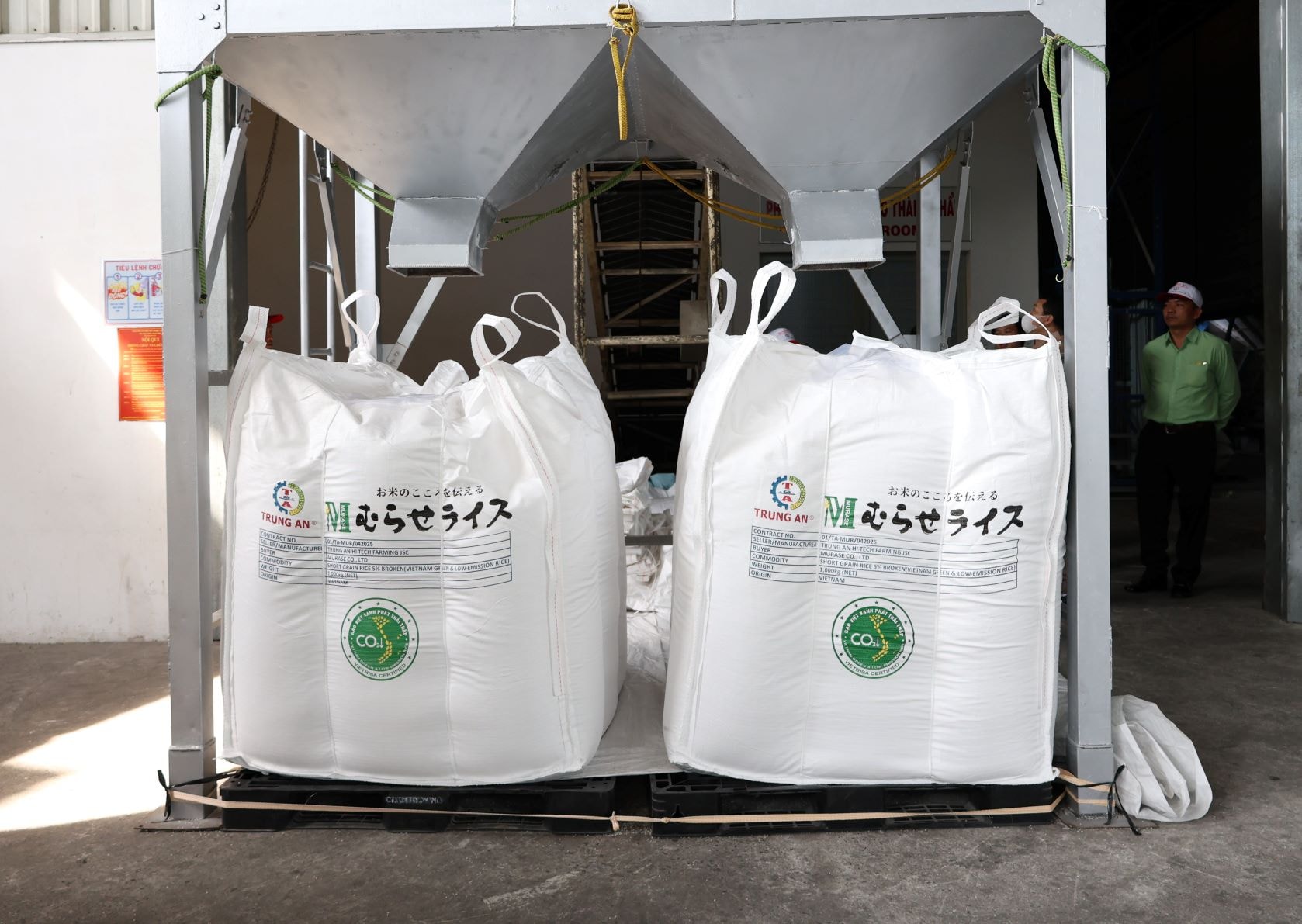
|
Rice from the batch exported to Japan
|
According to the Ministry of Agriculture and Environment, in the first half of 2025, Vietnam exported 4.9 million tons of rice—a new record—despite competition from India and Thailand. However, as the industry focuses on exports, which offer higher value, clear standards, and greater profit margins, the domestic market often takes a back seat.
Domestic consumers, who largely choose rice based on emotions and branding, now have an opportunity to redefine their role. As the world demands transparency, sustainability, and standardization, it also calls for domestic consumers to become more discerning, able to identify rice varieties, differentiate between genuine and counterfeit products, understand the value chain, and demand transparency from retailers.
Quality goes beyond the packaging
Many industry experts agree that defining “delicious rice” is not an exact science. It is a combination of the rice variety, soil characteristics, farming practices, storage methods, and individual taste preferences.
Ms. Hoa, a rice seed supplier in Thai Binh, shared her perspective: “It’s not fair to say that supermarket rice is inferior. Nor can we claim that traditional shops always offer better rice. Everyone has different tastes. What’s important is to make the right choice, understanding your family’s needs and your own preferences.”
An industry expert added: “Safe and healthy rice is good rice. Quality should not be judged solely by taste but also by its impact on our health. Consumers need to understand that there is rice for daily consumption and rice for special occasions, and this distinction should be clearly communicated, rather than left to subjective debates.”
Ultimately, the question, “Is supermarket rice truly inferior?” should not be answered with a simple yes or no. It is a complex issue influenced by consumer behavior, taste expectations, and market dynamics. As the Vietnamese rice industry reshapes its global presence with low-emission rice, the domestic market deserves a similar elevation. Informed consumers not only choose tasty rice but also play a pivotal role in driving the industry’s sustainable development.
– 19:00 15/08/2025
The Retail Renaissance: Unveiling Opportunities for Businesses to Soar
The retail market is due for a shake-up, according to experts. It’s a time of flux, with many businesses exiting the industry and leaving a void that only the most resilient and forward-thinking enterprises can fill. This creates a unique opportunity for those with a strong foundation to step up and seize the initiative.


